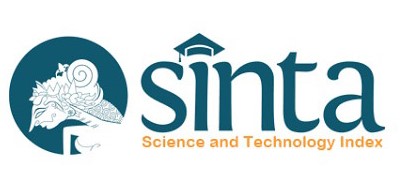Neuroanesthesia Management in Pediatric with Traumatic Brain Injury in Emergency Operation
Abstract
Background: Pediatric neuroanaesthesia is an exciting and challenging branch of anaesthesia. Because the anatomy and physiology of the neurological system of children are still immature, the management of neuroanaesthesia in children is different from that of adults, from hemodynamic control, selection of anaesthetic drugs used, to endotracheal intubation.
Case: In this case report, we report a 1-month-old male infant, weighing 4.6 kg, with a diagnosis of acute on chronic SDH in the frontotemporoparietal region. Physical examination revealed a decrease in consciousness GCS E2V2M5, with a pulse of 157 times per minute, a respiratory rate of 48 times per minute and a 100% SpO2 with oxygen administration of 2 litres per minute through a nasal cannula. On examination of the airway, there was no gurgling, snoring, or hoarseness. The patient was hemodynamically stable during the 90-minute operation. Postoperatively the patient was admitted to the PICU.
Conclusion: Anaesthesia treatment for traumatic brain injury in infants has unique problems that require knowledge of the anatomy and physiology of the pediatric brain.
Keywords: frontotemporoparietal region, neuroanaesthesia, paediatrics, traumatic brain injury
Keywords
Full Text:
PDFReferences
Lamsal R, Rath GP. Pediatric neuroanesthesia. Curr Opin Anaesthesiol. 2018;31(5):539-543. doi:10.1097/ACO.0000000000000630
Prabhakar H. Essentials of Neuroanesthesia. 1st edition. Elsevier; 2017.
Clebone A. Pediatric neuroanesthesia. Curr Opin Anaesthesiol. 2015;28(5):494-497. doi:10.1097/ACO.0000000000000241
McCann ME, Soriano SG. Progress in anesthesia and management of the newborn surgical patient. Semin Pediatr Surg. 2014;23(5):244-248. doi:10.1053/j.sempedsurg.2014.09.003
Laksono RM, Isngadi I, Murti AH. Intravenous paracetamol as a preemptive analgesia to reduce postoperative pain after major oncologic surgery. Anaesthesia, Pain Intensive Care. 2019;23(1):28-32.
Suryadi T. Risk Management of Neuroanesthesia in Traumatic Brain Injury with Multiple Facial Fractures and Subcutaneous Emphysema in terms of Ethical and Medicolegal Aspects. Britain Int Exact Sci J. 2020;2(3):609-614.
Newfield P, Cottrell JE. Handbook of Neuroanesthesia. Lippincott Williams & Wilkins,; 2007.
Gilder F, Turner JM. Principles of paediatric neuroanaesthesia. In: Matta BF, Menon DK, Turner JM, Eds. Textbook of Neuroanaesthesia and Critical Care. 1st ed. Greenwich Medial Media LTP; 2000:227-238.
Blumenthal I. Shaken baby syndrome. Postgrad Med J. 2002;78(926):732-735.
Badjatia N, Carney N, Crocco TJ, et al. Guidelines for prehospital management of traumatic brain injury 2nd edition. Prehospital Emerg care. 2008;12(sup1):S1-S52.
Paiva WS, Soares MS, Amorim RLO, de Andrade AF, Matushita H, Teixeira MJ. Traumatic brain injury and shaken baby syndrome. Acta Med Port. 2011;24(5):805-808. doi:10.20344/amp.505
Vavilala M, Chesnut R. Anesthetic Considerations for Pediatric Neurotrauma. In: Gupta, A. Gelb, D. Duane & RA, ed. Gupta and Gelb's Essentials of Neuroanesthesia and Neurointensive Care. Eds. Cambridge University Pers; 2018:214-223. doi:10.1017/9781316556801.030
DOI: http://dx.doi.org/10.21776/ub.jap.2022.003.01.02
Refbacks
- There are currently no refbacks.

This work is licensed under a Creative Commons Attribution 4.0 International License.









.png)

